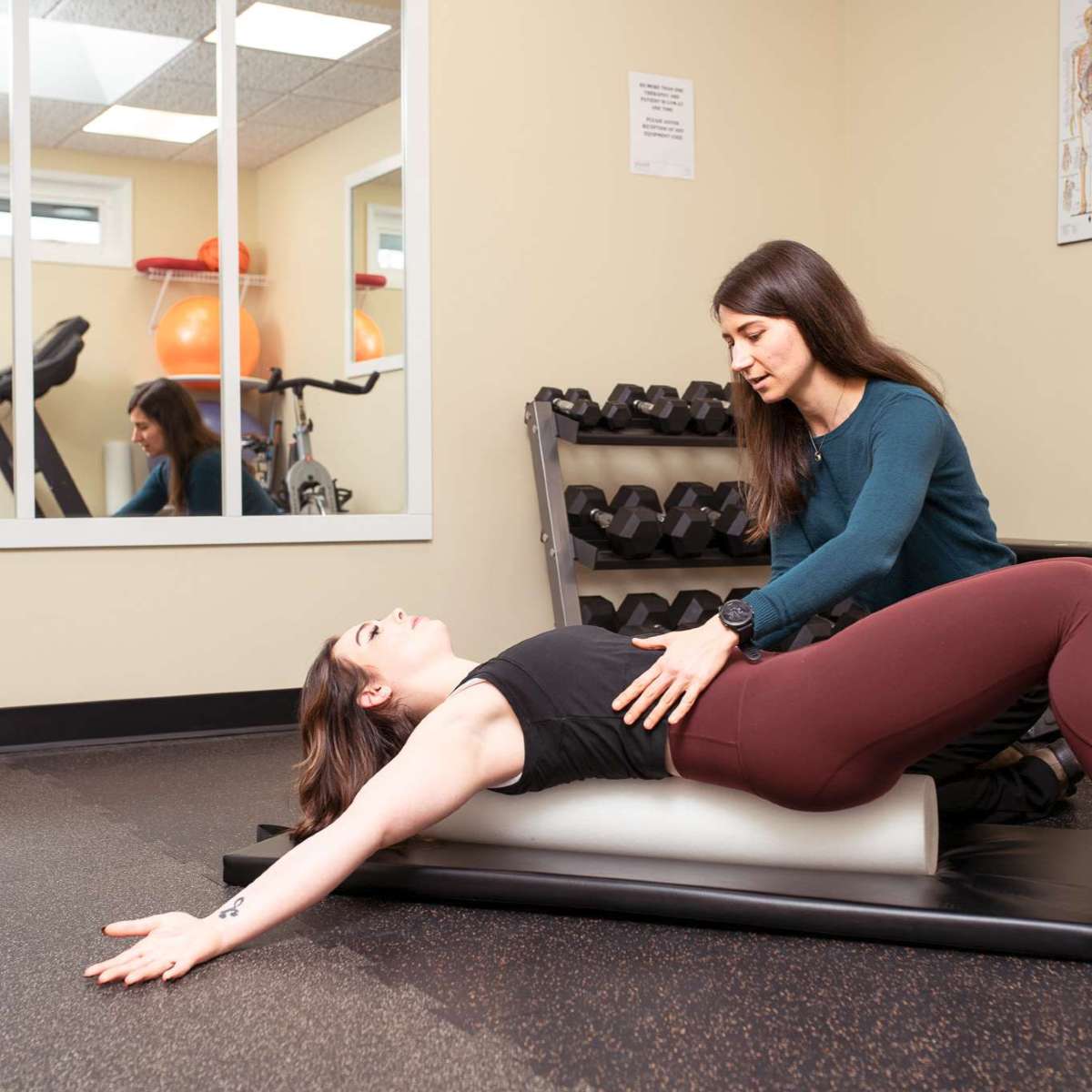Pelvic Floor Physiotherapy
Pelvic Floor Physiotherapy is a comprehensive program used to help restore confidence and function.

What is pelvic floor physiotherapy?
Much more than simply working out a muscle group, Pelvic Floor Physiotherapy involves a combination of techniques.
Thorough approach
Pelvic Floor Physiotherapy at Pinpoint takes a thorough approach to helping restore function and confidence.
- Education on proper care of the pelvic floor
- Prescription of strengthening and/or relaxation exercises to help with proper function; and
- 1-on-1 work with your physiotherapist
Integrative therapies
Work with your physiotherapist may also include one or a combination of the following therapies to the surrounding musculature:
Collaborative
Your first visit will consist of a thorough, hands-on assessment accompanied with education and exercise guidance.
The best results are collaborative. We strongly believe that your dedication to doing your prescribed exercise is as important as the therapy you receive.
What is pelvic floor physiotherapy used for?
Pelvic Floor Physiotherapy helps women of all ages with a variety of issues ranging from pregnancy-related changes to pelvic dysfunctions.
Pelvic Floor Physiotherapy can be effective on:
- Incontinence
- Pelvic organ prolapse
- Pelvic instability (pregnancy-related or otherwise)
- Chronic pelvic pain
- Coccyx (tailbone) pain
- Vulvar and vaginal pain
- Painful sex
- Complications due to childbirth, pregnancy
- Deconditioning during and after childbearing
- Changes in pelvic health related to menopause

How does pelvic floor physiotherapy help?
Pelvic Floor Physiotherapy helps restore function by:
- Identifying the type of pelvic pain and treating accordingly
- Identifying, treating, and strengthening the pelvic floor muscles
- Identifying the degree of female organ prolapse and providing treatment (or referring on for further medical intervention as appropriate)
- Retraining the bladder (teaching proper habits)

What can I expect during pelvic floor physiotherapy?
Initial history & assessment
During your initial appointment, your physiotherapist will take an extensive history of your symptoms and concerns.
The history will include questions regarding your:
- Pain (present or absent)
- Bladder/bowel function
- Sexual function; and
- Any symptoms of weakness or other dysfunction
Physical examination
Your pelvic floor physical examination may include:
- External assessment of the pelvic region
- External assessment of the abdominal wall; and
- Digital internal assessment of the pelvic floor musculature
What is ‘digital internal assessment’?
Digital internal assessment refers to the use of a lubricated, gloved finger (hence “digit”) to physically examine the muscle function of the pelvic floor.
When performed, digital examination is more likely to lead to appropriate physiotherapy interventions (and greater success rates with treatment). While this process does provide the best picture of pelvic floor muscle function, we understand that not all clients will be comfortable with internal examination.
- Internal digital examination is optional, and is only completed with the client’s consent.
- Patients will never be coerced to complete any part of the examination that they are uncomfortable or unprepared for.
- Internal examination for the purpose of pelvic floor physiotherapy involves digital examination only, using a lubricated, gloved finger. We do not use speculums or other tools.
If you have any questions about the process of digital examination, please contact us and a pelvic floor physiotherapist will be happy to talk to you.
Further reading
For more detailed information about Pelvic Floor Physiotherapy, please review the PDF downloads and blog posts below.
Pregnancy & Pelvic Floor Physiotherapy Study
“Randomised controlled trial of pelvic floor muscle training during pregnancy.” Authored by Kjell Å Salvesen and Siv Mørkved.
Pelvic Floor Physiotherapy Review
“Pelvic floor muscle training versus no treatment, or inactive control treatments, for urinary incontinence in women.” Authored by Chantale Dumoulin and Jean Hay-Smith.
Leaking Athletes Take Their Training to the Floor
Article by Herman & Wallace Pelvic Rehabilitation Institute
Get Started with Pelvic Floor Physiotherapy
Have questions about Pelvic Floor Physiotherapy or any other treatments? Visit the FAQs page or get in touch for help.


